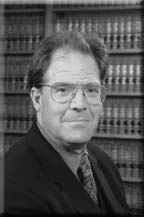
Peter Jaszi
Last week, Peter Jaszi–the nation’s leading expert on the copyright doctrine of fair use–was asked to testify before Congress on fair use and whether it needed reform. His short explanation, reproduced here for everyone who didn’t make it to the hearing room, shows why fair use is both flexible and reliable, given the last two decades of court decisions:
The fair use doctrine helps guarantee the continued international primacy of the United States as a site of innovation. After a rocky start, today’s courts are doing an excellent job of implementing the legislative direction contained in Sec. 107 – which itself restated more than a century of case law. Fair use doesn’t need “reform,” but it could use legislative support. For example, Congress could exempt non-commercial creators of derivative works from potentially onerous statutory damages, which today chill the exercise of fair use. Congress could further enable fair use by amending Sec. 301, which deals with preemption of state laws, to bar some or all contractual waivers of the fair use right.
Transformative.
In my written testimony, I describe the current “unified field theory” of fair use that informs decisions from every part of the federal system. It is keyed to the notion that uses that advance “transformative” ends – those that repurpose and add value to the copyrighted material they employ — deserve special consideration. Yesterday, the Second Circuit Court of Appeals provided an illustration. The Bloomberg Professional service had posted the recording of a conference call between Swatch Group executives and hundreds of registered financial advisors. In finding fair use, the Court noted that “in the context of news reporting and analogous activities, the need to convey information to the public accurately may in some instances make it desirable and consonant with copyright law for a defendant to faithfully reproduce an original work. In such cases, courts find transformation by emphasizing the altered purpose or context… .” The Court also made it clear that Bloomberg’s use of the entire recording was “reasonable … in light of its purpose of disseminating important financial information to American investors and analysts.”
Fair Use and the Public Interest.
The point – again — was that Bloomberg was serving the collective public interest in access to information without working great harm to any private interest. It’s not surprising to see fair use at work in journalism, given that the Supreme Court has stressed the intimate connection between fair use and the First Amendment. More broadly, however, we’ve seen over the past 20 years how the fair use doctrine is experienced as a important positive right by readers and publishers, movie companies and remix artists, tech incumbents and start-ups, teachers, developers of educational materials, artists, scholars, librarians, providers of disability services, filmmakers and other contributors to the kinds of progress that our IP laws serve. Of course, not every person in every sector likes every decision, but we’ve all benefitted from this general pro-innovation trend in our copyright law.
The pattern of decisions of which Bloomberg is the most recent example articulate no a priori limitation on the range of situations to which the doctrine may be applied – limiting it to those involving the creation of new copyrightable works, or whatever. Given the ultimate goal of copyright, which is not to favor any particular form of expression of others, but to promote the production and dissemination of useful knowledge, there is no apparent practical, non-ideological reason why such limitations would be desirable. At the very least, those who would now seek to rein in the future development of the doctrine have a heavy burden of persuasion to demonstrate why doing so would be in the public interest.
Flexible and dynamic.
We value fair use its flexibility and dynamism, which allow courts to adapt the doctrine to new social, economic and technological circumstances. This is not to denigrate the value of static specific exceptions – like Secs. 108 for libraries, 110 for education, or 121 for the print-disabled. Where these apply, they are valuable to particular groups of users because they provide high levels of certainty – they are, in effect, safe harbors, even though never comprehensive and often not up-dot-date. As Congress and the courts have recognized repeatedly, these provisions do not supplant fair use – rather, they are supplemented by it.
One common critique of fair use is that its commendable flexibility gives rise to unacceptable levels of uncertainty. In fact, however, recent scholarship establishes that fair use jurisprudence is both patterned and predictable. Lawyers (and their clients) have little real difficulty forecasting likely fair use outcomes in areas where there are direct or analogous precedents.
And predictable.
Also contributing something to the predictability of fair use are professional organizations that developed fair use Best Practices — documents to guide their constituents in exercising their fair use rights responsibly and constructively. Finally, though, the greatest credit for the healthy state of fair use law belongs to the most — users, large and small, who invest time and thought in making sound fair use decisions, thus helping to assure the condition of “cultural flourishing” which is the constitutional objective of copyright in the United States.
